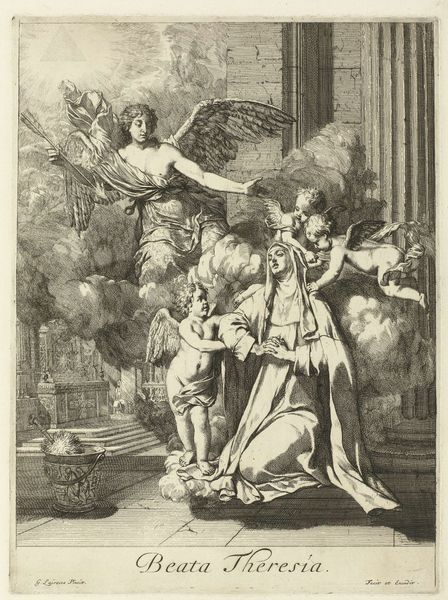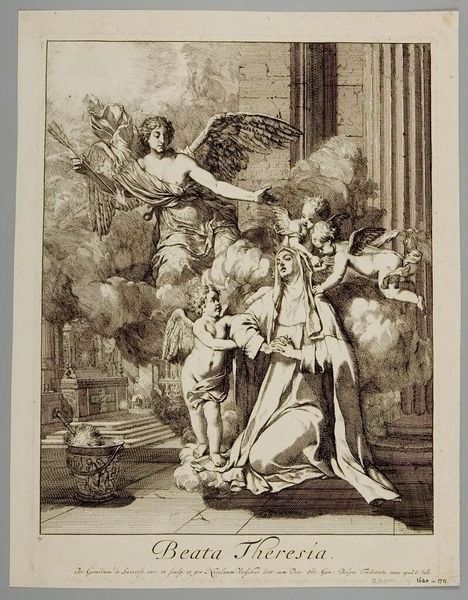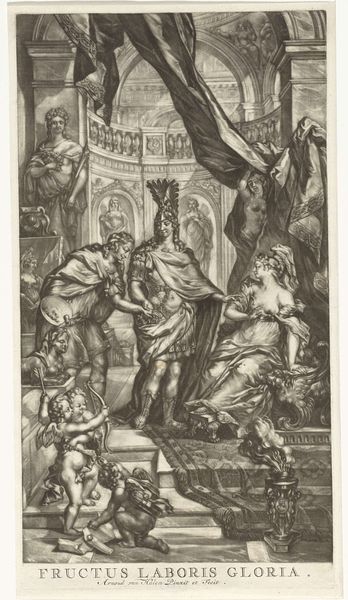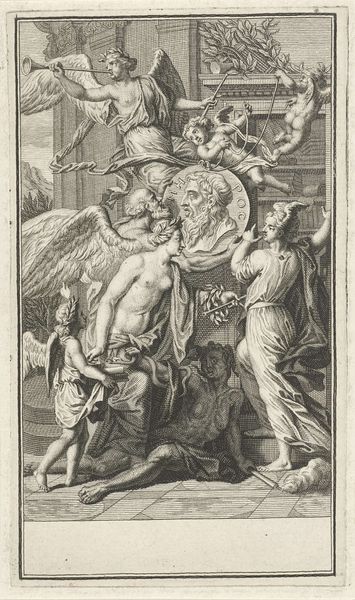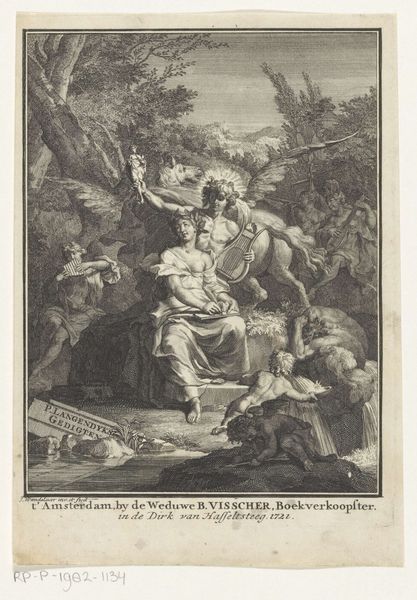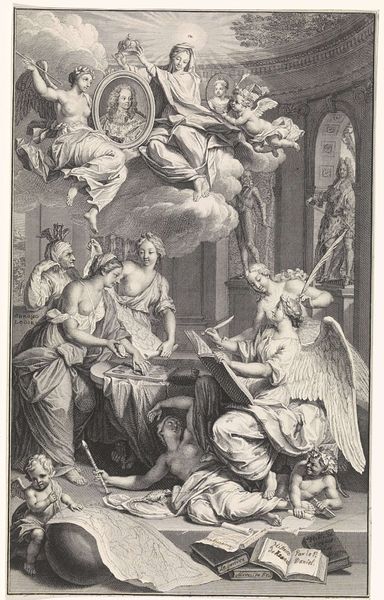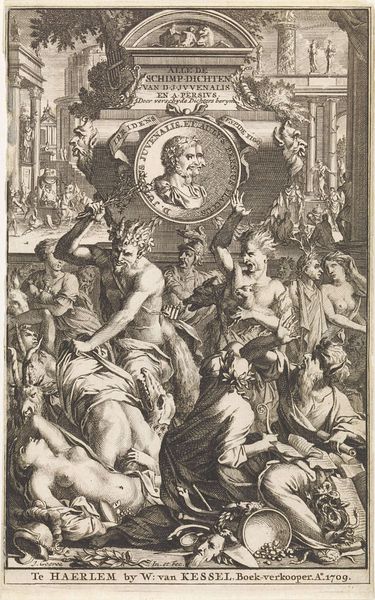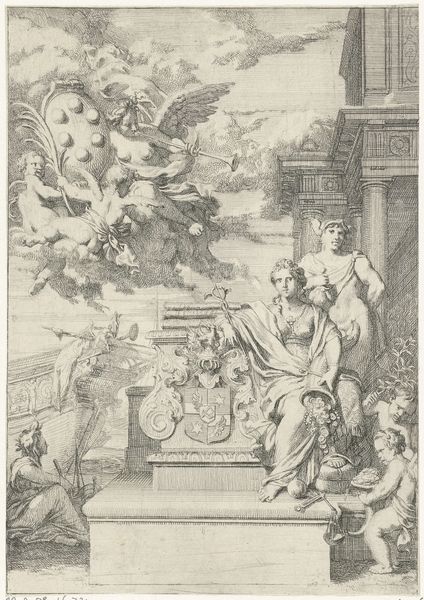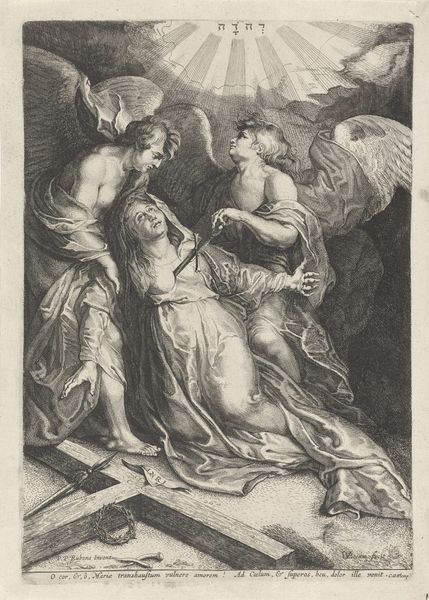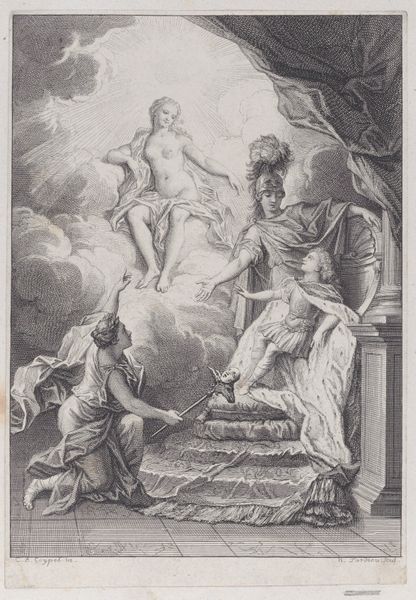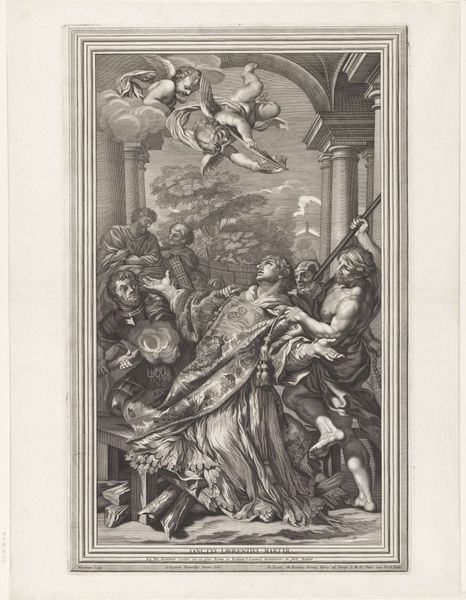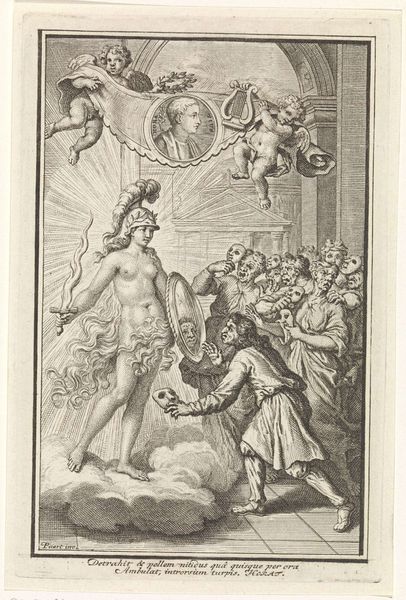
drawing, pencil
#
pencil drawn
#
drawing
#
baroque
#
pencil sketch
#
figuration
#
pencil drawing
#
pencil
#
history-painting
Dimensions: height 358 mm, width 253 mm
Copyright: Rijks Museum: Open Domain
Curator: Pieter van den Berge's drawing, "H. Theresia van Ávila," made sometime between 1675 and 1737, presents a vision in pencil of the saint surrounded by angels and religious symbolism. The Rijksmuseum holds this intriguing piece. My immediate response? The softness of the pencil creates a dreamlike quality, blurring the line between earthly and divine. Editor: Dreamlike, yes, but also deeply structured by the prevailing social frameworks of the time. This image of Saint Teresa is not simply about individual religious experience. It's about power, about the representation of female spirituality within a patriarchal church, don’t you think? Note the angelic figure looming, almost dominating, just behind her. Curator: The baroque style certainly plays a part in emphasizing Teresa's spiritual intensity. The materials – pencil on paper – would have been readily available, thus widely circulated and potentially accessible to various classes of people, if not in its original form, then certainly as an engraved print. We might think about the paper’s provenance, where it was manufactured, the labor that went into its creation, and how this intersects with the elite patronage that fueled the arts during this period. Editor: Absolutely. And regarding the pencil itself, the graphite would have likely come from specific mines, involving extraction processes and trade routes indicative of early global economies. Let's remember that saints, while seemingly ethereal figures, were also constructs – elevated as moral examples that reinforce societal expectations about women’s roles and submission. The pencil as the medium of their creation, speaks to the constant work to construct the narrative. How Teresa herself may or may not have conformed to that, is perhaps more complicated. Curator: It also raises questions of accessibility and mass consumption of imagery. Prints would have allowed for a wider circulation than the original drawing, influencing a wider audience. This piece functions as a commodity, illustrating a historical, gendered understanding of sanctity. The production matters! Editor: It's a dance between genuine religious feeling and imposed ideals, rendered visible through line and form. Examining the artwork's origins helps to dismantle its assumed innocence, revealing a tapestry of societal power dynamics. Curator: A detailed look at the work through materiality allows us a very contemporary way to engage with what can sometimes feel like very far away artworks. Editor: Indeed, moving away from just devotional considerations, focusing instead on social narratives encourages us to rethink familiar artworks with a new perspective, recognizing that even in depictions of saints, systems of power are at work.
Comments
No comments
Be the first to comment and join the conversation on the ultimate creative platform.
